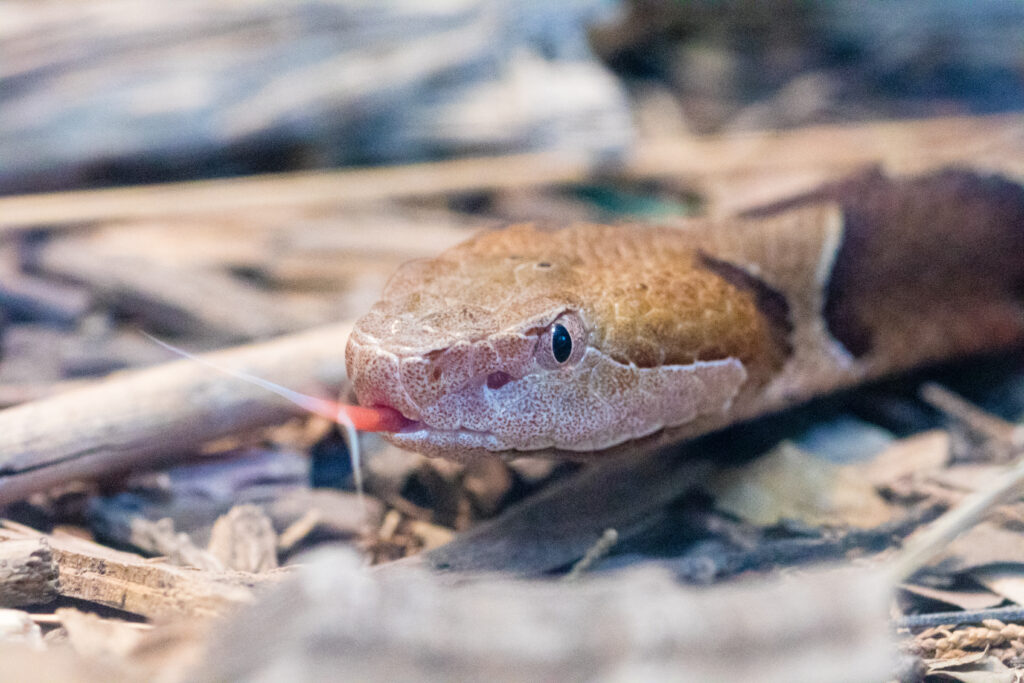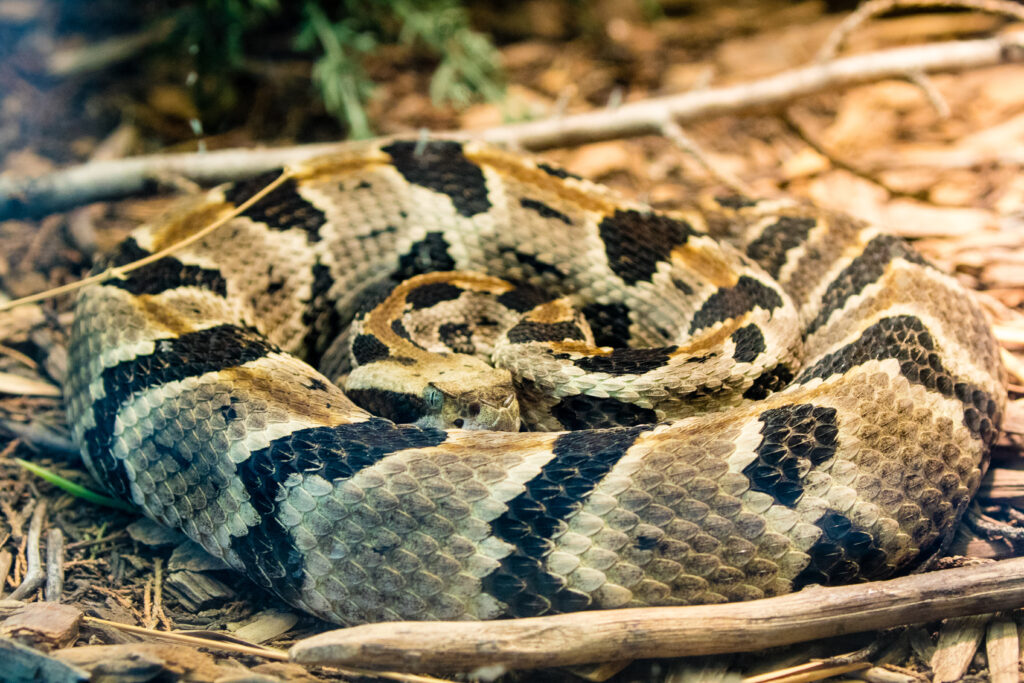One of the most widely spread snakes across North America is the rattlesnake.
Adapted for a wide range of weathers- from arid sandy deserts to the colder high altitudes of mountains, rattlesnakes can be found across the continent.
“The Rattlesnake is a North American pit viper,” Ectotherm Zookeeper David Kelley said. “They get the name because they’ve got these two heat sensitive pits that are pretty noticeable right around the nostrils. They have specialized scales that form that typical rattle, that they’ll use in defense to try and scare off anybody that might be trying to bother them.”
While all rattlesnakes are pit vipers, not all pit vipers are rattlesnakes. The copperhead is a North American pit viper because it has heat sensing pits, but lacks a rattle and is therefore not a rattlesnake.

The rattlesnakes at Sedgwick County Zoo can be found in the Predators of the Prairie section of the North American Prairie Habitat.
While 10 rattlesnake species call SCZ home, not all 10 species are on display. Some are behind the scenes, due to available space or due to breeding programs. Currently, five rattlesnakes can be viewed by guests visiting the Zoo.
Prairie Rattlesnakes can be found across the Great Plains, from as far south as Northern Mexico and as far north as Alberta and Saskatchewan in Canada.
“They might be the most diverse species for their range,” Kelley said. “They’re pretty much all over the United States.”
The Timber Rattlesnake lives in the Northeast United States. Their scales are dark brown or black with a gray cross pattern. However, they can be solid black in color.
“Timber rattlesnake is one of the species of concerns in Kansas,” Kelley said. “We want to be able to bring that animal to the forefront of people’s minds and know that they’re there and they are threatened.”

Ridge-nose rattlesnakes’ name comes from their ridges, which are upturned scales, that run along the side of their nose.
“We’ve got two subspecies of ridge-nose rattlesnakes, which are very specialized, small rattlesnakes. Maybe only about two feet long. Sometimes they can get close to three feet, but they’re still small animals,” Kelley said. “They live in the mountains of Arizona and New Mexico.”
The Banded Rock Rattlesnake can be found in the Southwest United States and parts of Mexico.
“People describe them as being the ‘mint chocolate chip rattlesnake,'” Kelley said. “They’re brown and green.”
Rattlesnakes get their name from the rattle at the end of their tale. This rattle is a series of modified scales that are used as a form of defense.
“The rattle is pretty much just for defense,” Kelley said. “It is the snakes’ way of saying, ‘I am here. I’m really annoyed, a little scared. Just take a step back. Don’t bother me.'”
When rattlesnakes are born, they have a single rattle, called a button. Each time a rattlesnake sheds its skin, it gets a new segment on its rattle. However, unlike the rings on a tree, the number of buttons on a rattlesnake doesn’t necessarily correlate to its age.
“If a snake has a really good year, and it just eats all the time, it’s constantly growing, it might shed four or five, six times and get a new segment every single time,” Kelley said.

Rattlesnakes tend to get a bad reputation as being mean or aggressive, but they’re actually the opposite. A rattlesnake’s rattle is a warning that alerts predators.
“They don’t want to have to use their venom. Using that venom up, they’ve got to fill those glands back up, they’ve got to produce more venom before they can even eat prey, which affects their life,” Kelley said. “They don’t really want to be wasting it on biting you because they’re afraid. So, that rattle is really there just to kind of scare off anything that is frightening them at the time.”
Kelley recommends if you come across a rattlesnake in the wild, to just slowly step back from it. If you leave the rattlesnake alone, it will leave you alone.
While you might not want to encounter a rattlesnake in the wild, at SCZ you can easily encounter them in a controlled environment. When visiting the Predators of the Prairie Habitat, be sure to take the time to appreciate the various scale colors of the rattlesnakes and to count the segments on their rattles.
“I really fell in love with their colors,” Kelley said. “Plus, it’s really hard to beat the rattle, it’s just a really cool, unique adaptation.”